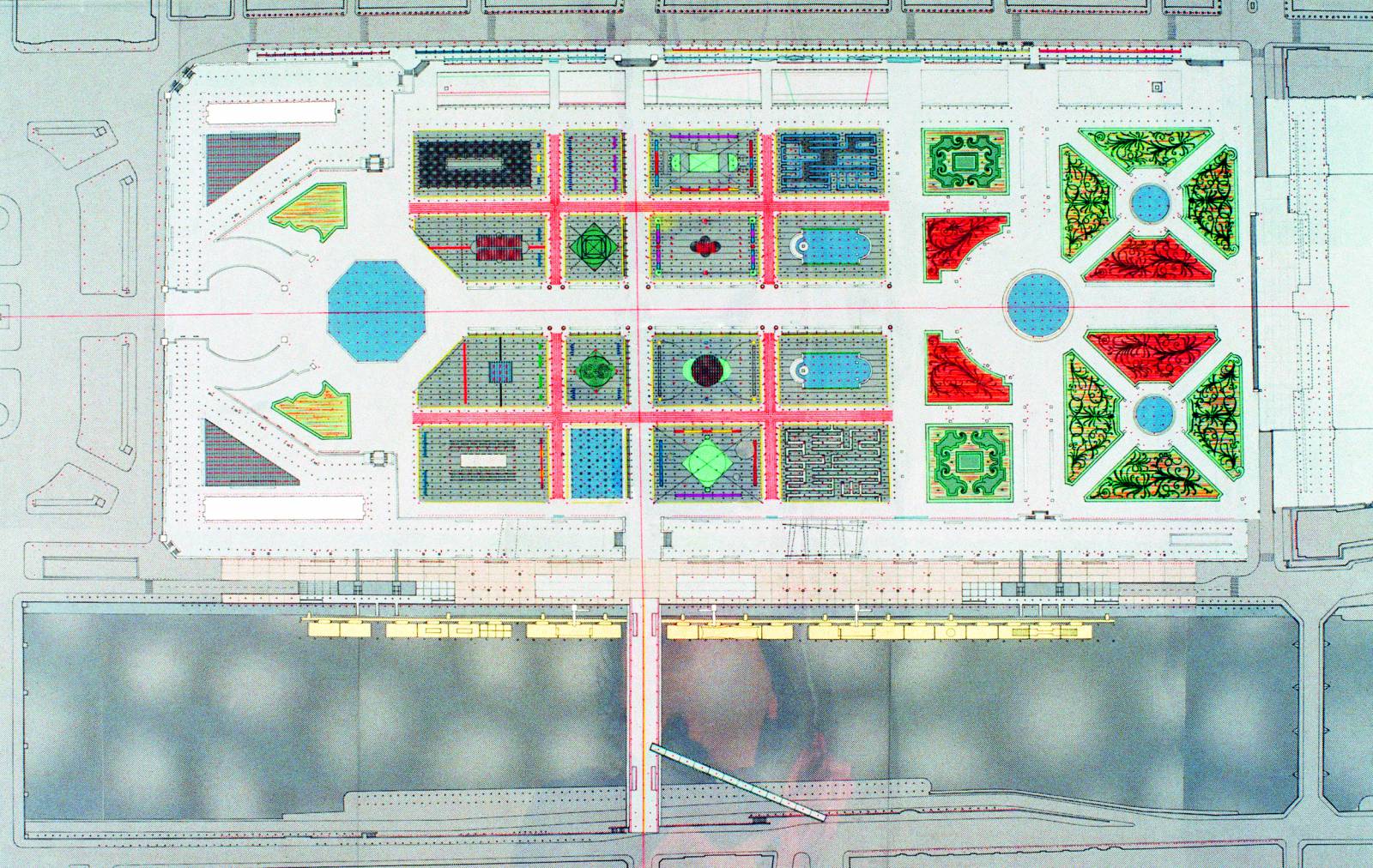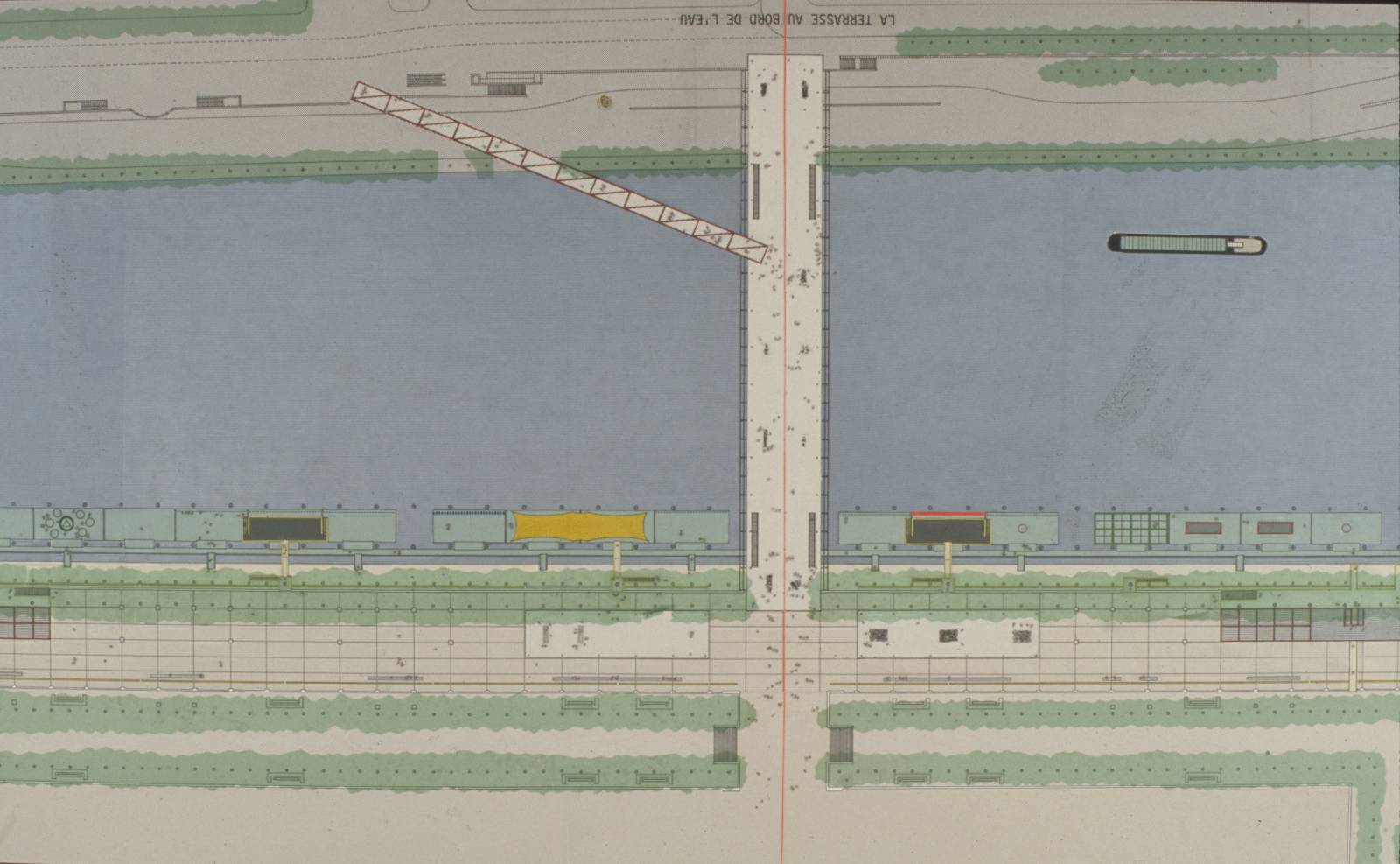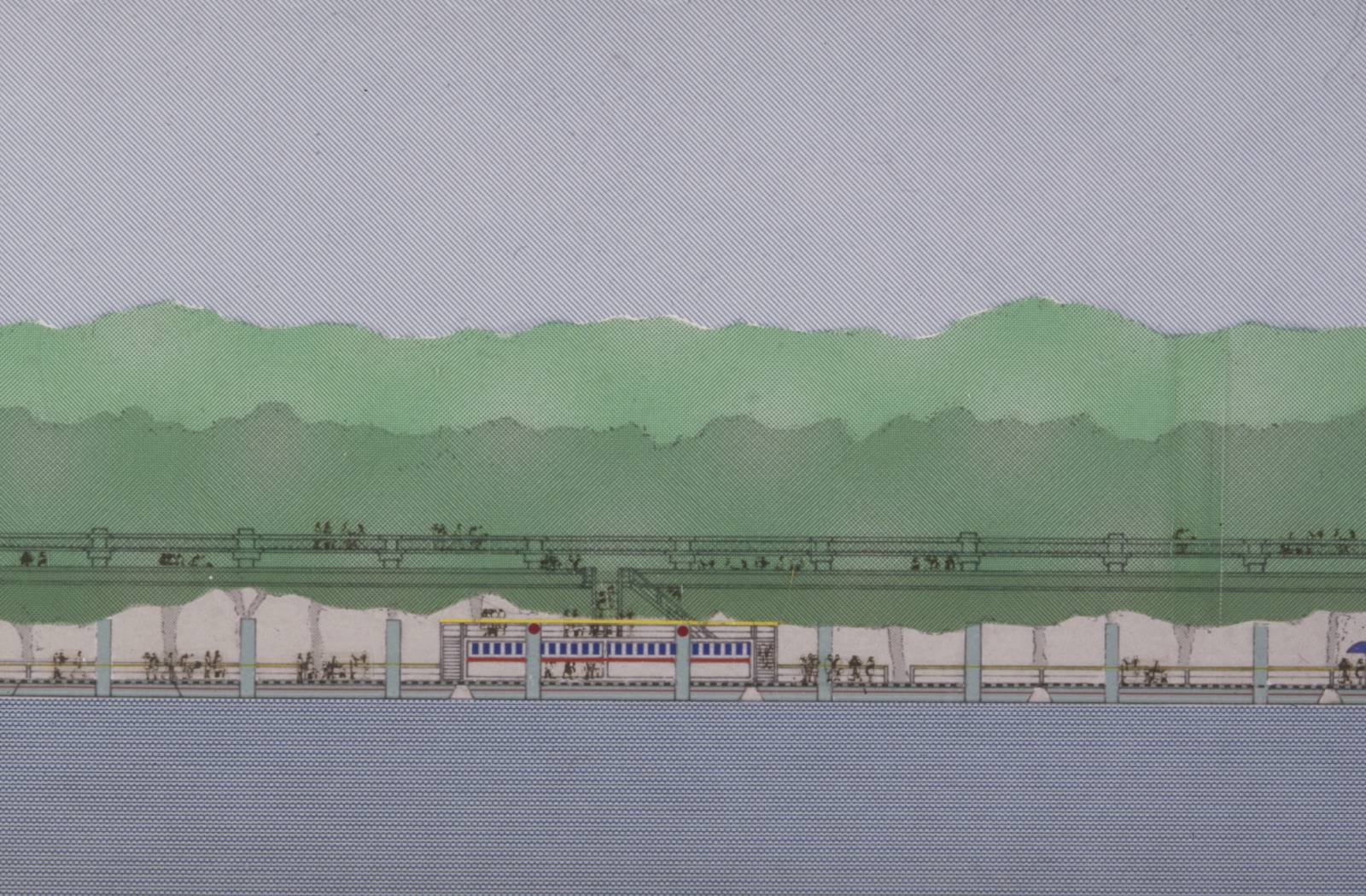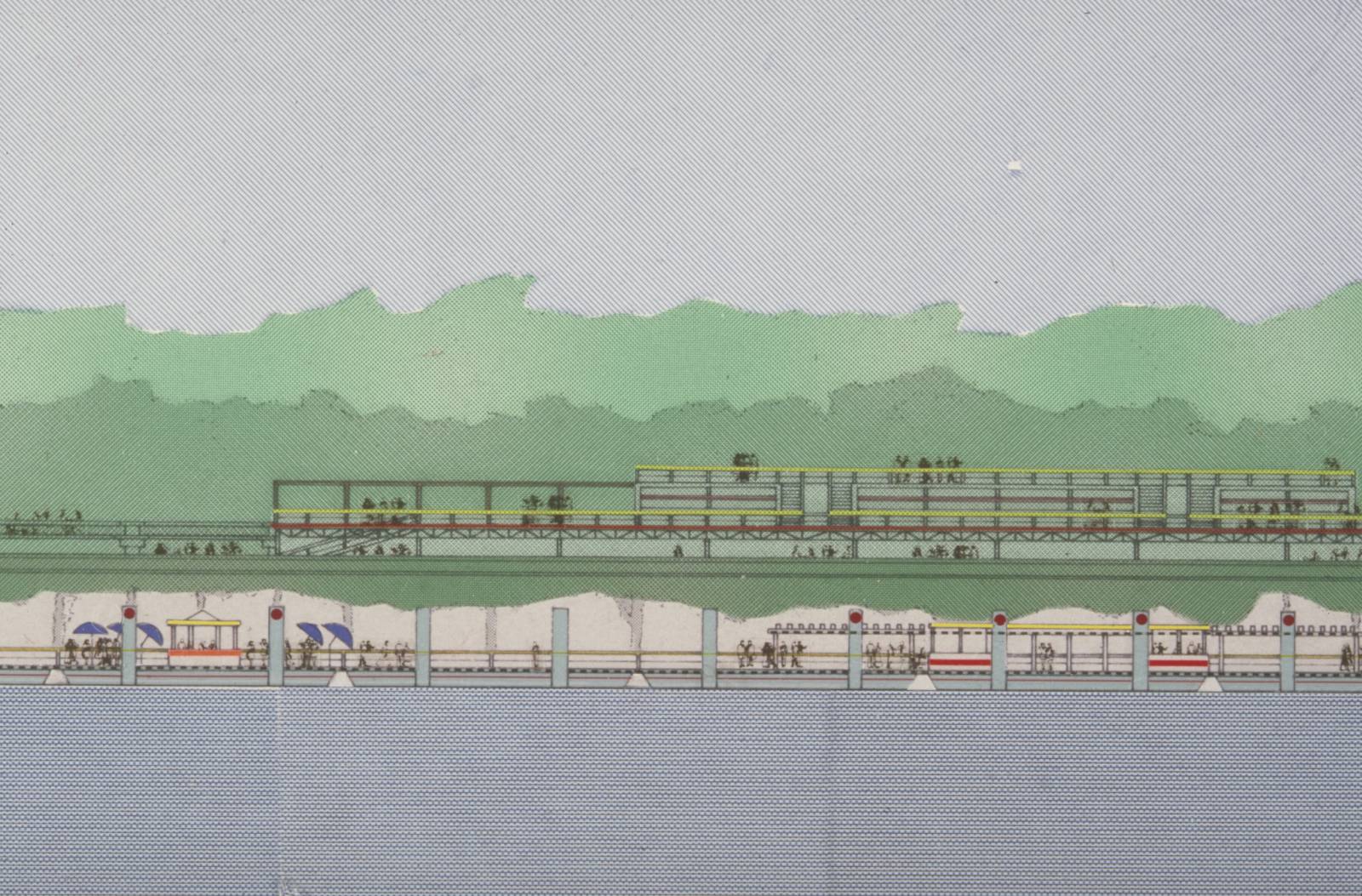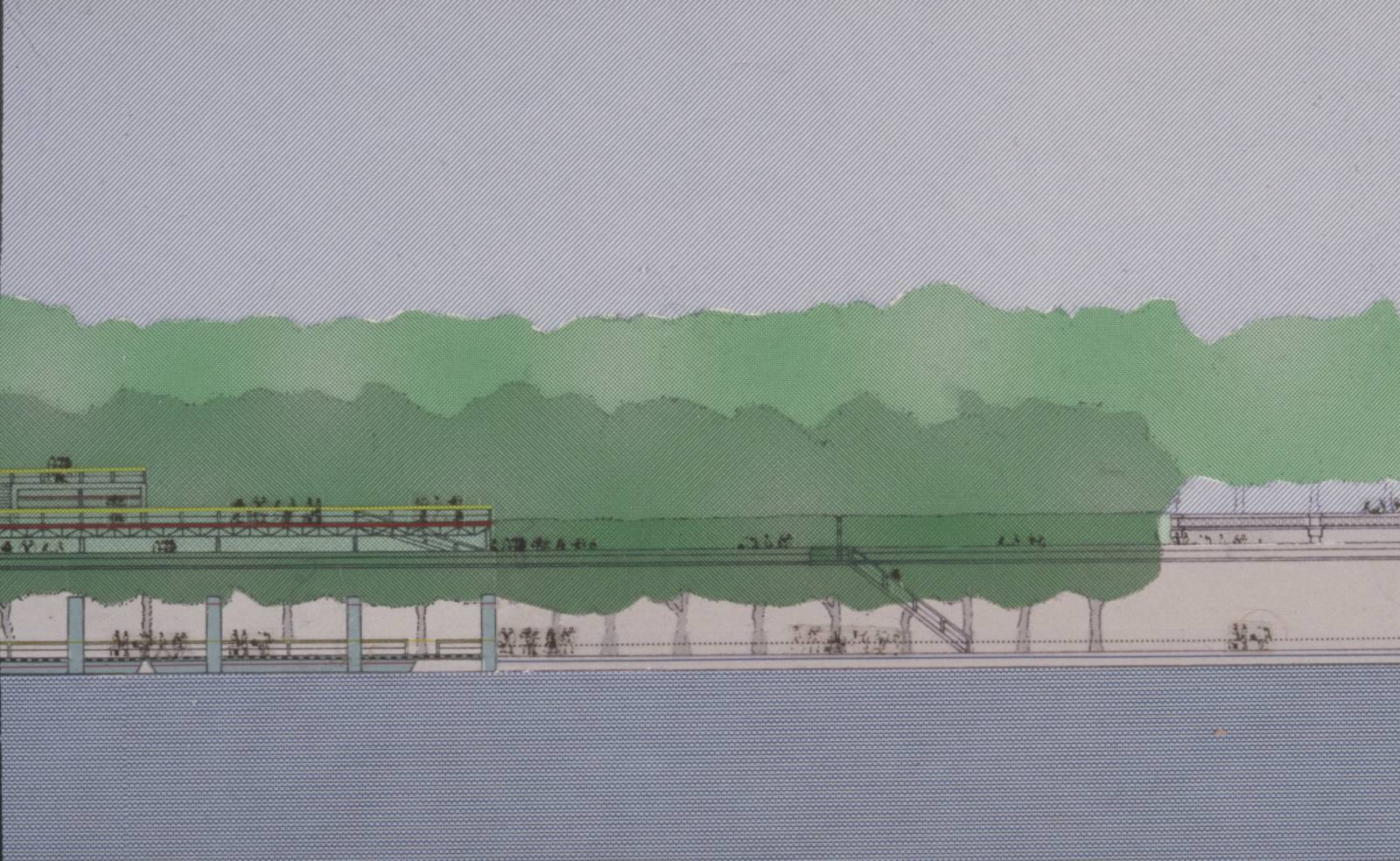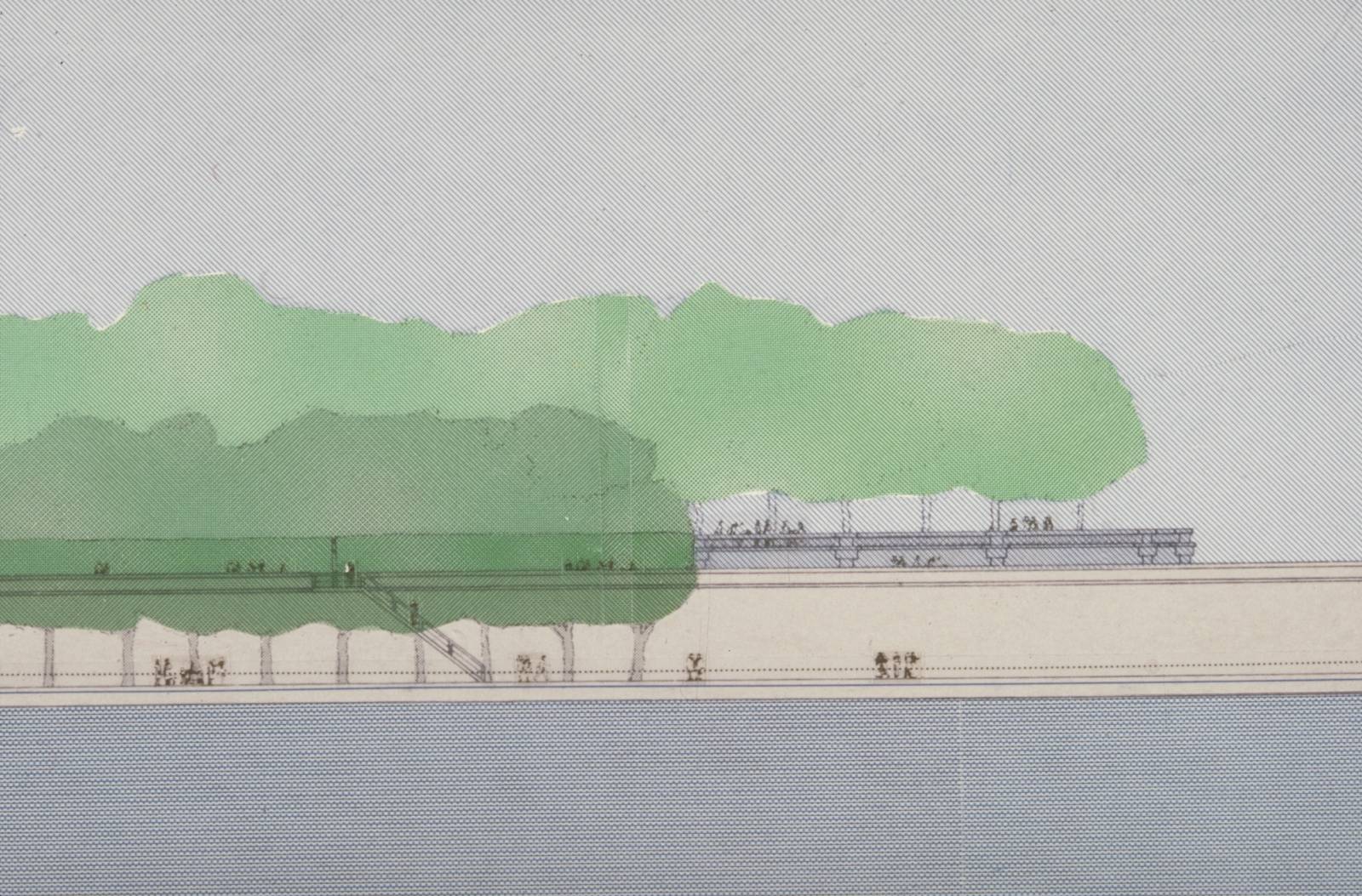Jardins des Tuileries
- Paris, France
Being a key “historic monument ” and Le Nôtre masterpiece with earlier contributions from de Serres, Molet and Regnard, the essential question for the Tuilleries project was not about reconstructing a Louis XIV garden but to recover the Tuilleries’ dignity as the backdrop to so many important events as well as forming part of the architectural layering of the Louvre.
Here was an opportunity to establish a relationship with the Seine and the Musée d’Orsay, to solve the problem of inaccessibility to the river due to speeding traffic and to reinvest the waterside promenade with restaurant-pavilions. The Orsay footbridge would arrive directly at the Waterside Terrace amid 19th century bronzes with an enhanced view back to Left Bank.
Amid 17th century statues and Le Nôtre’s dominant geometry and perfect horizontality, we proposed installations with landscapers and contemporary artists for various themes, for example The Grotto : underground access to the riverbank as a large, cool room, open to the Seine with a fountain – a relationship of water, meditation, shelter from heat or rain. The precise positioning of these interventions adheres to the 17th century coherence of the garden without fixing it and the events are immediately conceived as contemporary.
For the gardens to be truly part of Parisian life, they need to be alive by night as well as day, inciting visitors through scenographic lighting of the grounds and statues, lights from the kiosks in the central alleys and brasserie-bars on the Waterside Terrace, and a continuation of the luminous axis running from the Champs Elysées.
Specific improvements would include the puppet-theatre, wooden horses, swings, kiosks and furniture. Areas would be designated for a kind of open-air gym, an ice-skating alley and a huge, ultra-light glass umbrella to protect children’s play from the rain.
Jean Nouvel
